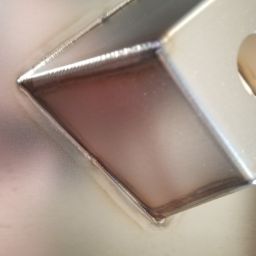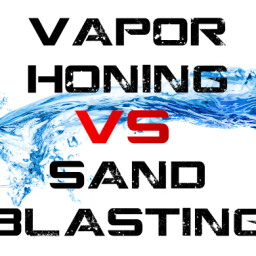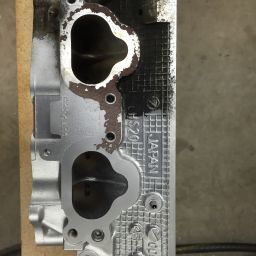What Is Vapor Honing? 5 Things You Should Know
Did you know that vapor honing is one of the most advanced technologies you can use for finishing and cleaning surfaces? Whatever industry you’re in—whether you’re an engineer, a mechanic, or a hobbyist—vapor honing is a great technology for you to use.
If you’re considering investing in a vapor honing machine, you’re probably asking yourself, “What is vapor honing?” You also might be asking yourself questions such as:
“When it comes to vapor honing vs. sandblasting, which one’s better?”
“How does the vapor honing process work?”
Given how much there is to know about complex vapor honing technologies and how they work, you may be confused about where to find answers to your questions that are clear. You might also be frustrated, whether this is for financial reasons or because there’s a project you want to finish up with soon.
That’s why we’ve put together this article. Once you have the information you need about vapor honing, you can decide if this technology is right for you and finish up any necessary projects with it. Read on to learn more.
1. What Is Vapor Honing?
There’s a lot to know about vapor honing, but the first thing we should cover is what is it. By understanding the basics of this technology, you can understand everything else we cover in this article better. Basically, vapor honing is a process that has two uses: cleaning and finishing a surface.
If this sounds familiar, it may be because you’ve heard of vapor honing by one of its other names. Vapor honing is also known as vapor blasting, aqua blasting, wet blasting, slurry blasting, and dustless blasting.
As you can see from all these names, vapor honing is the “wet” version of dry blasting. We’ll cover the differences between these later on in this article.
For now, we’ll explain what vapor honing is.
Basically, this is a technology that involves the blasting of abrasive material blast mixed with pressurized water. This mix is called “slurry,” and is pressurized before you hit the surface you’re treating with the pressurized water and abrasive material mix.
When it’s used to clean a surface, the abrasive eliminates the materials you’re removing and the water washes them away. When it’s used to finish a surface, the abrasive smooths down the surface and the water softens it blow.
2. How Vapor Honing Works
Now that you know what vapor honing is, you should know how vapor honing works. By understanding this process, you can decide if it’s one you want to use on your projects or at work. Vapor honing works through a series of steps, which we’ll review now.
Remove Any mechanical or rotating assemblies
Before you use your vapor honing machine, you have to remove any rotating assemblies or mechanically moving parts being blasted.
Otherwise, the pressure of the slurry mix hitting the surface will actually cause the parts to lock up causing damage to the parts themselves. This could cause the particles that are locked between the mechanical assemblies to actually scratch the parts even worse causing more damage.
To prevent this, simply disassemble the parts being blasted and once blasting is complete thoroughly rinse all parts before rebuilding and returning to service.
Choose Your Slurry Mix
The first thing you do is choose and prepare the slurry mix for use. This includes the water and the abrasive material you choose.
The abrasive media can be glass media, sodium bicarbonate, aluminum oxide, ceramic bead etc. The abrasive selection for vapor honing is determining the end result needed.
Once you’ve chosen your slurry mix, you should put it into the chamber with water in the vapor honing machine. Once you’ve added your water and abrasive to your machine you are ready to begin the vapor honing process.
Choose Your Machine size
Now that you’ve chosen your slurry mix you need to determine what size machine you need to run for your job. Vapor Honing Technologies builds many different machine size to accommodate any need you might have.
How It Works on the Micro Level
When the slurry mix hits the surface that you’re finishing, the abrasive materials in the mix create the scrubbing action that causes the surface to become more smooth. Then, the water clears away the abrasive materials. Additionally, because the abrasive materials attach to the water on a molecular level, you end up with a surface that’s even more smooth.
If you’re cleaning a surface, then the vapor honing machine works on several levels. First, it will clean the surface of any materials and any grease. Then, it will clean the surface itself with the water of the abrasive materials that have been used in the process.
This makes vapor honing ideal for cleaning a surface when you don’t want to have to spend hours afterward cleaning up. If you’re doing a DIY vapor honing project at home, this is a benefit to take advantage of.
3. Vapor Honing Is Better Than Dry Blasting
If you’re considering investing in a vapor honing machine or vapor honing services, then chances are, you’re interested in knowing how vapor honing compares to dry blasting. After all, these two methods are used for similar projects.
However, vapor honing is better than dry blasting. Here are the reasons why.
More Even Finishing
When you use a dry blasting machine to finish a surface, you’re hitting the surface at an angle. This means that you need to focus on specific areas of the surface with the pressurized air and abrasive material mix.
While this can be effective, it does risk the result of an uneven surface.
Because water spreads around when it hits the surface you’re finishing it hits the surface more evenly. As a result, you have more even finishing with vapor honing.
A Gentler Process
Because of the water present in the slurry mix, vapor honing is a more gentle process when you’re treating a surface. Whether you’re finishing or cleaning the surface, the water makes the impact more gentle.
Even though the abrasive materials are strong enough to get the job done, this gentle process makes it possible to preserve your surface better.
A More Efficient Process
When you’re using a dry blasting machine, you can use the dry blast to clean the surface or finish it to a certain extent.
However, after you’ve used it, you’ll still have the dust leftover on the object you’ve just treated. This requires cleanup. Additionally, there might be dust in the area too, which means additional hours cleaning that area.
With a vapor honing machine, you don’t have these issues.
At the very same time that the abrasive materials are hitting the surface you’re treating, the water is washing those abrasive materials off. You’re doing the treatment and cleanup all in one go.
As for the leftover slurry mix, you can rinse it down easily into a drain or a compartment you put the mess in, after which you can throw it out. This is a great advantage of wet blasting.
4. Vapor Honing Has a Variety of Uses
Vapor honing has a variety of uses. In this section, we’ll cover some of the industries that vapor honing is used in, why it’s popular in those industries, and how you can use vapor honing most efficiently if you choose to use one of these machines in your work.
Cleaning Auto Parts
Remember how, in the last section, we explained why vapor honing is a gentler process than dry blasting? Because of this advantage, vapor honing is useful if you work in the auto or motorcycle industries.
In addition to being able to clean rust, grease, contaminants, and factory coatings from parts easily, you are also more likely to preserve the original material.
This means that using a vapor honing machine to treat auto part surfaces is both faster and gentler than it would be with a dry blasting machine. It can also be used for automotive restoration.
Finishing or Cleaning Sensitive Surfaces
If you work with sensitive surfaces, then you might have had the misfortune in the past of using a sandblasting machine that ruined one of the surfaces you treated with it. Whether you work as a furniture restorer, clean interiors of buildings, or fix fire-damaged walls, then you need a more gentle process.
This is why vapor honing is so useful in any industry where you finish or clean sensitive surfaces.
Because the water lessens the impact of the abrasive material without preventing it from cleaning or finishing the surface, vapor honing is the best way to treat a sensitive surface.
Following Airborne Dust Regulations
If you work in construction, especially if you do it in a densely populated area, then you’re probably aware of the many airborne dust regulations imposed on construction workers in these areas. This is to promote higher air quality and to prevent any issues with construction invading everyday life.
If you usually use a dry blasting machine, then you might not have this option if there are airborne dust regulations where you’re working.
Vapor honing is the perfect alternative. Because of the water in the slurry mix, there’s far less dust in the air. Instead, the water catches it.
Treating Soft Metals
If you work with soft metals while manufacturing metal parts, we recommend using a vapor honing machine. With a dry blasting machine, there’s the risk of the soft metal you’re treating being warped. This is because dry blasting is less gentle than the vapor honing alternative.
Instead, use a vapor honing machine. Because of the water present in the slurry mix, the temperature created by the friction when you’re treating the soft metal will be slightly lower. As a result, you won’t end up with warped soft metals.
5. Vapor Honing Is Modern
Vapor honing is one of the most modern technologies out there for finishing and cleaning surfaces. This was created as an alternative in the ’70s to the use of crystalline silica in sandblasting processes, which was causing irreversible lung diseases.
Since then, vapor honing has become popular in many industries, from construction to engineering.
In the past 20 years especially, wet blasting has become an alternative to dry blasting. This is because of the many benefits we’ve covered in this article, such as gentler treatments and easy cleanup.
Need More Information?
Now that we’ve answered the question, “What is vapor honing?” you might have additional questions. Maybe you’re wondering about vapor honing cabinet cost, or you want to find a vapor honing service near you. Or maybe you need help deciding what model of vapor honing machine to buy.
Whatever information you may need, we’re here to help. At Vapor Honing Technologies, we’re experts when it comes to vapor honing. We can also sell vapor honing equipment and surfaces.
To learn more about how we can help you, contact us here.








